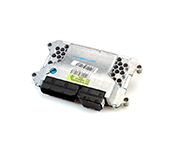Loading...

Automotive electrical system is composed of a closed circuit together with an independent origin or generator of electrical current (battery of generator). In this circuit, the power current moves from the generator and reaches consumer assemblies and then returns to the generator through vehicle metal body. In fact, the vehicle body is connected to the battery earth terminal. From amongst the automotive power consumer assemblies include lighting system, air conditioning system and motor power. However, the electronic issue concerning the vehicles dates back to the time of emergence of need of this industry to control the vehicle motors performance, including but not limited to monitoring fuel contamination and consumption. The first electronic part applied in this sector is the ECU. It should admitted that since the other controlling units applied in different car sectors, the ECU had a generic meaning “electronic control unit”, in a way that today the expression ECM for “motor control module” and TCM for “power transmission system control unit” are used. Usually in the vehicles the motor control unit controls certain issues such as γ, OBD, cooling system, sparkling system (for gas-combusted vehicle), lubricating system, fueling system and other mechanical- electronic (mechatronic) parts such as gas cap. Evidently, the origin of obtaining data and information shall be from certain sensors installed in different locations on the motor.